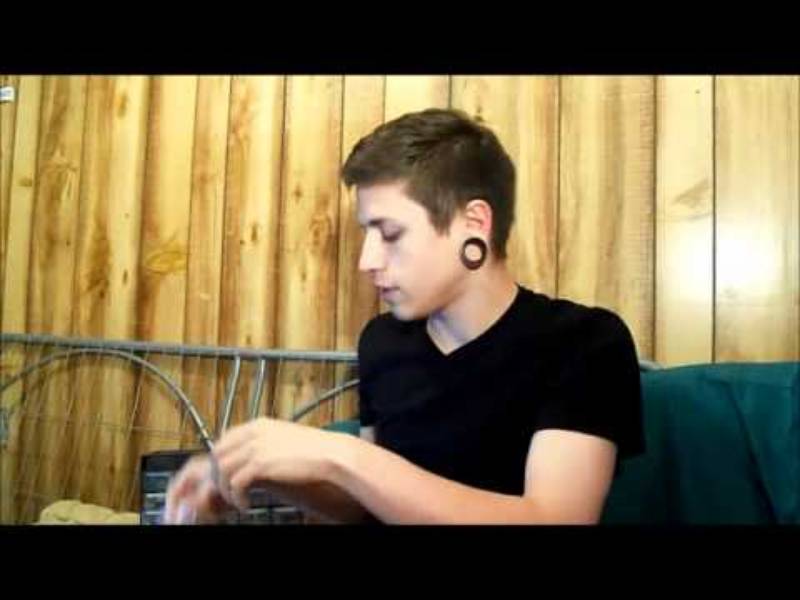Blowout Ganges: Ear stretching, also known as ear measurement, is the stretching of holes drilled in the earlobes. Although it may seem like a modern trend, humans have been prying their ears for thousands of years.
A rash is one of the most common complications of ear measurement. It is a ring of scar tissue that forms behind the jewelry and makes the piercing appear inside out.
Rashes usually occur when you try to stretch the hole too quickly. They often cause severe pain and inflammation.
In this article, we’ll help you identify when you’re dealing with an ear injury and consider the best treatment options.
Table of Contents
Causes Of Ear Blowout Ganges
Excessive stretching usually causes a rash. Stretching your ear should be a slow, gradual process.
Increasing the size of your jewelry too quickly can cause rashes and other complications such as torn flaps and infections.
In the United States, jewelry size is measured in gauges, commonly abbreviated as “g” (not confused with grams). Countries using the metric system often use millimeters (mm) instead of gauges.
Classic earrings are usually 20 gauge or 18. As the earrings get more prominent, the gauge size will decrease. So once you get to 0 gauge the next size is 00 gauge which is about 3/8 inch in diameter.
Sizes over 00 gauge are measured in inches and increase by 1/16 of an inch.
It is generally recommended to turn on a dial indicator (expressed in bars 2) when upgrading to a larger piece of jewelry to avoid a rash.
Also, many people recommend waiting 4-6 weeks before increasing the size. The waiting time may increase as your jewelry gets bigger.
Symptoms Of Blowout Ganges
When a blowout occurs, a skin ring forms behind the piercing. This ring is usually red, irritated, and painful. A blowout can make the piercing appear to be turning inside out.
Overstretching The Ear Can Also Lead To Infection. It Can Cause:
- itching
- yellow pus
- swelling
- tenderness
- burning
You can often treat minor infections at home. However, if the infection spreads or doesn’t improve within two days, see a doctor.
You can reduce your risk of infection by regularly cleaning items that often come in contact with your ears, such as your phone, headphones, and hats.
Prevent Ear Rashes
If you think you might get a rash, take action as soon as possible. If you spot a rash early on, YOU can prevent permanent damage to your ear.
Massage Your Ear
There is some evidence that massaging the scar tissue could help break it down. Many people recommend lightly massaging the earlobe with oil for 5-10 minutes to prevent blisters from forming.
Oil Application
Using oil on your measured ears will help keep them hydrated, promoting thicker skin and reducing the chance of tearing.
Many types of oil are effective in keeping your measured ears moist. Some of the most common types re:
Coconut oil, Tea tree oil, castor oil, Jojoba oil
Start With The Correct Gauge
Stretching your ear past two gauge is often considered “the point of no return.” Once YOU have stretched your ear out to this point, you are likely to have surgery if you want the hole to close completely.
Treat skin rashes
If you have a rash, the following methods can help treat it.
Downsize Ganges
If you start to develop a rash, upgrade to a smaller jewelry size.
Many people recommend dropping two or three sizes (for example, four gauges by six gauge). Once your rash has healed, you can slowly increase your gauge size again, one dimension at a time.
Rinse With Saline Solution
You can cleanse your rash three times a day by soaking your earlobe in a cup filled with saline solution.
Pre-made salt solutions are widely available, but you can easily make your own. Mix 1/4 teaspoon of salt with 8 ounces of distilled water.
Surgery And Other Removal Techniques
In some cases, your rash can be permanent, especially if you develop a type of raised scar known as a keloid scar. If this happens, you may need to an operation to remove the rash.
There are different surgical techniques for closing a calibrated ear. One of the most common methods, known as wedge resection, is to make an L-shaped incision and fold the earlobe back on itself.
Also Read: HOW TO PRACTICE PELVIC FLOOR EXERCISES
